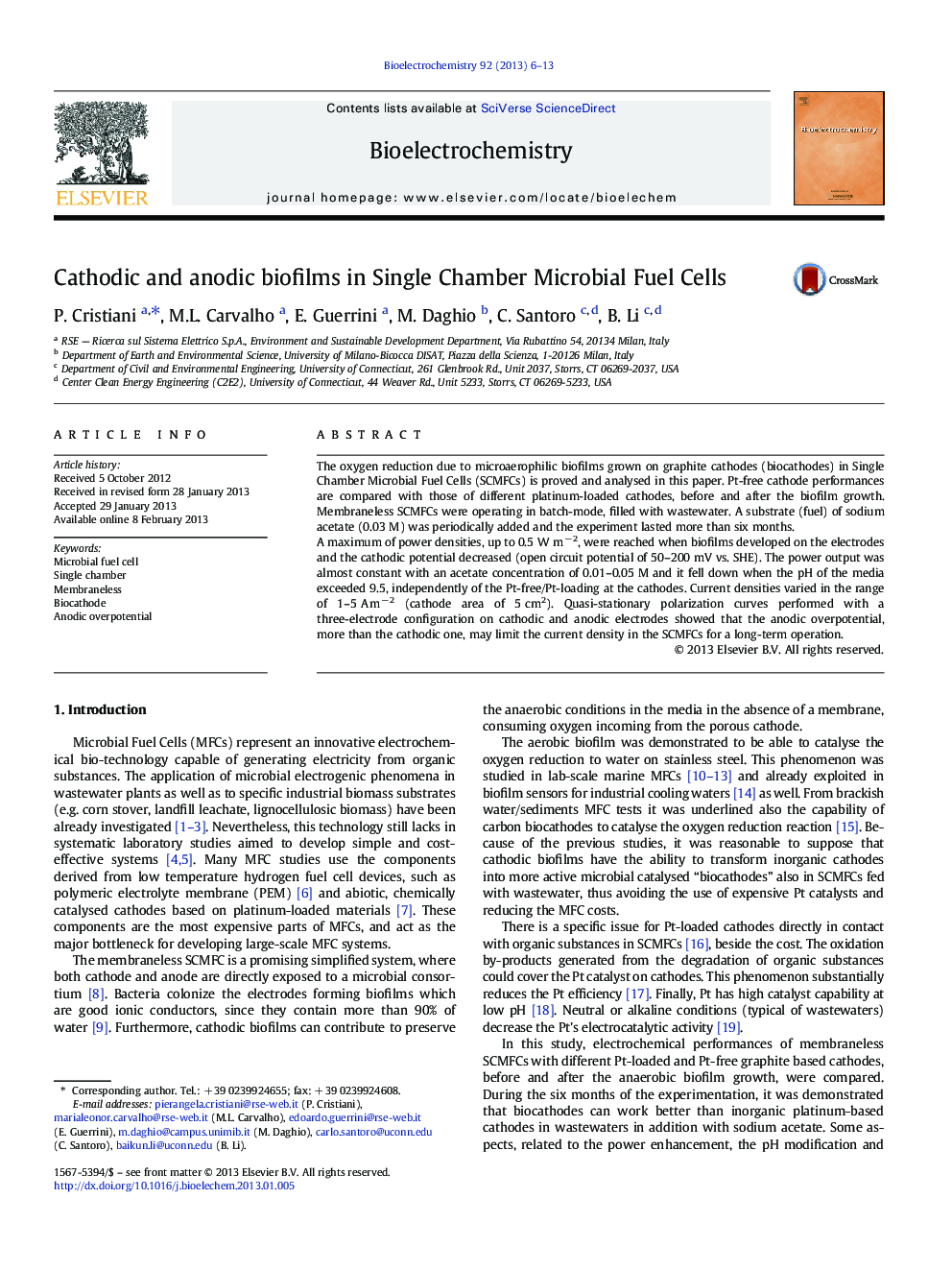| Article ID | Journal | Published Year | Pages | File Type |
|---|---|---|---|---|
| 1268522 | Bioelectrochemistry | 2013 | 8 Pages |
The oxygen reduction due to microaerophilic biofilms grown on graphite cathodes (biocathodes) in Single Chamber Microbial Fuel Cells (SCMFCs) is proved and analysed in this paper. Pt-free cathode performances are compared with those of different platinum-loaded cathodes, before and after the biofilm growth. Membraneless SCMFCs were operating in batch-mode, filled with wastewater. A substrate (fuel) of sodium acetate (0.03 M) was periodically added and the experiment lasted more than six months.A maximum of power densities, up to 0.5 W m− 2, were reached when biofilms developed on the electrodes and the cathodic potential decreased (open circuit potential of 50–200 mV vs. SHE). The power output was almost constant with an acetate concentration of 0.01–0.05 M and it fell down when the pH of the media exceeded 9.5, independently of the Pt-free/Pt-loading at the cathodes. Current densities varied in the range of 1–5 A m− 2 (cathode area of 5 cm2). Quasi-stationary polarization curves performed with a three-electrode configuration on cathodic and anodic electrodes showed that the anodic overpotential, more than the cathodic one, may limit the current density in the SCMFCs for a long-term operation.
Graphical abstractFigure optionsDownload full-size imageDownload as PowerPoint slideHighlights► Biofilm as catalyst of platinum-free cathodes of membraneless Single Chamber MFCs ► Graphite microbial biocathodes work as platinum enriched cathodes in wastewater. ► Short polarizations by three electrodes were used to study single kinetics. ► High anodic polarization resistance and pH higher than 9 limited the current densities. ► Current densities of 1–5 A m− 2 and power densities of 500 mW m− 2 were found.
